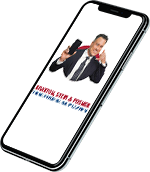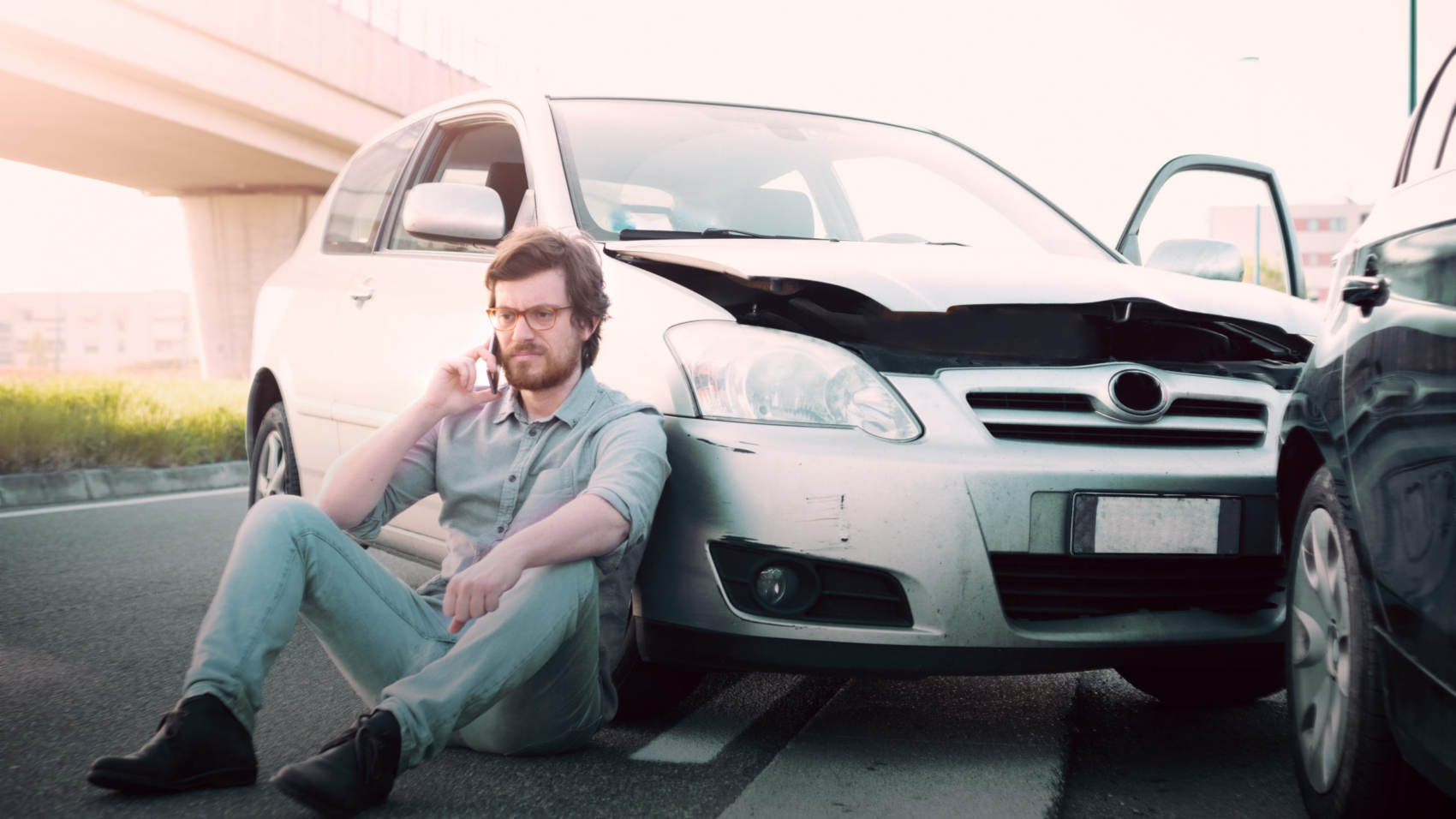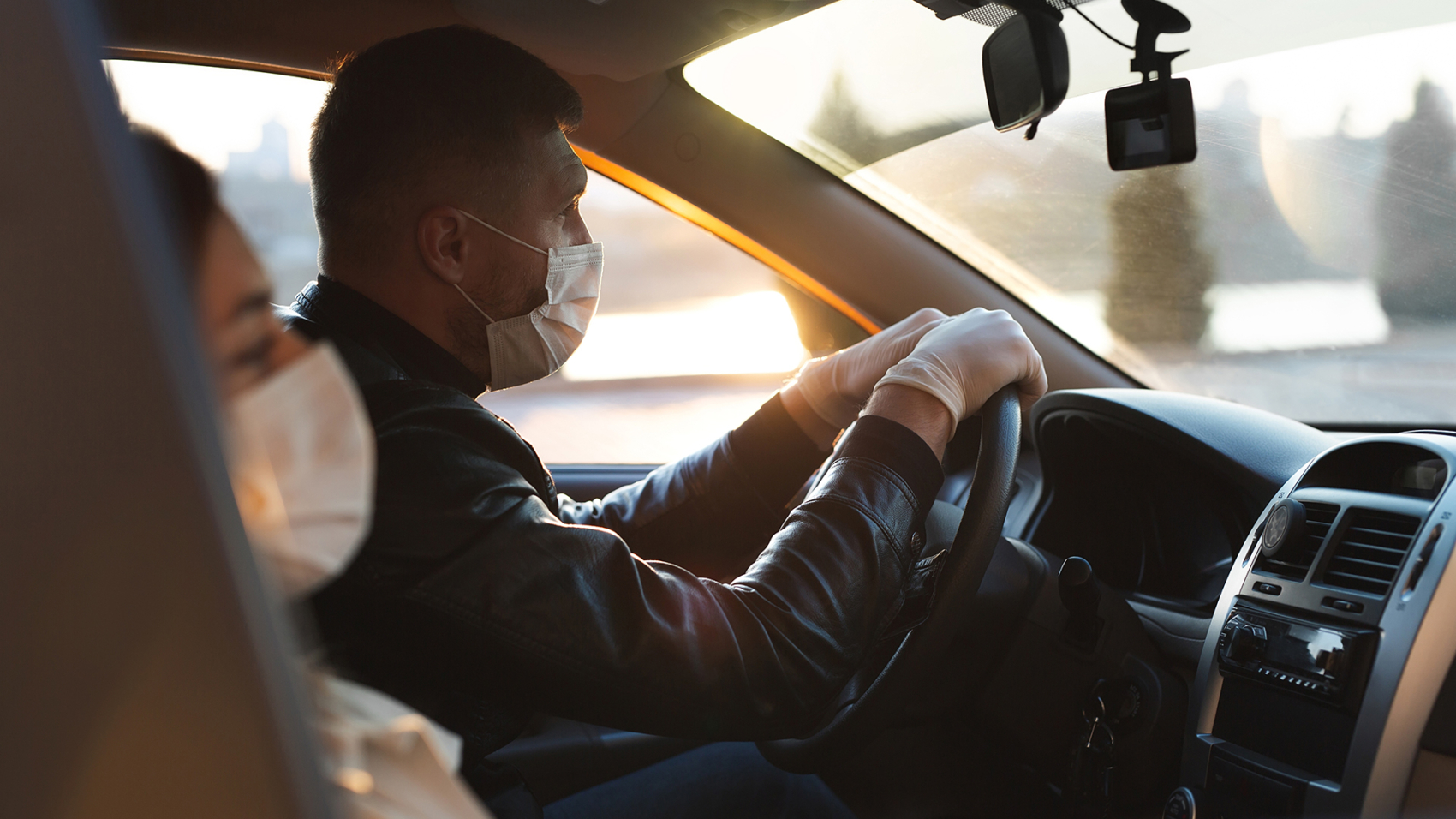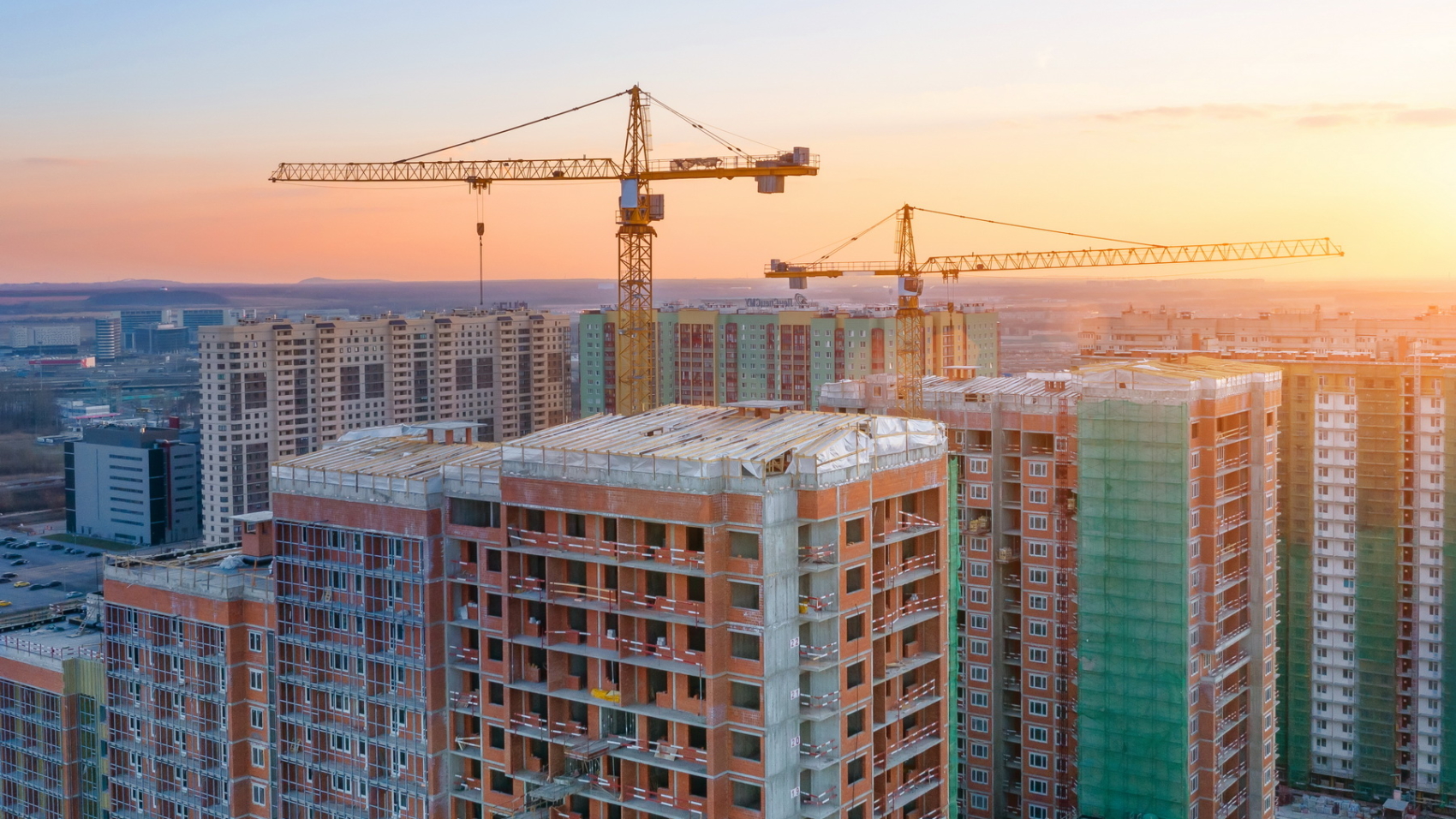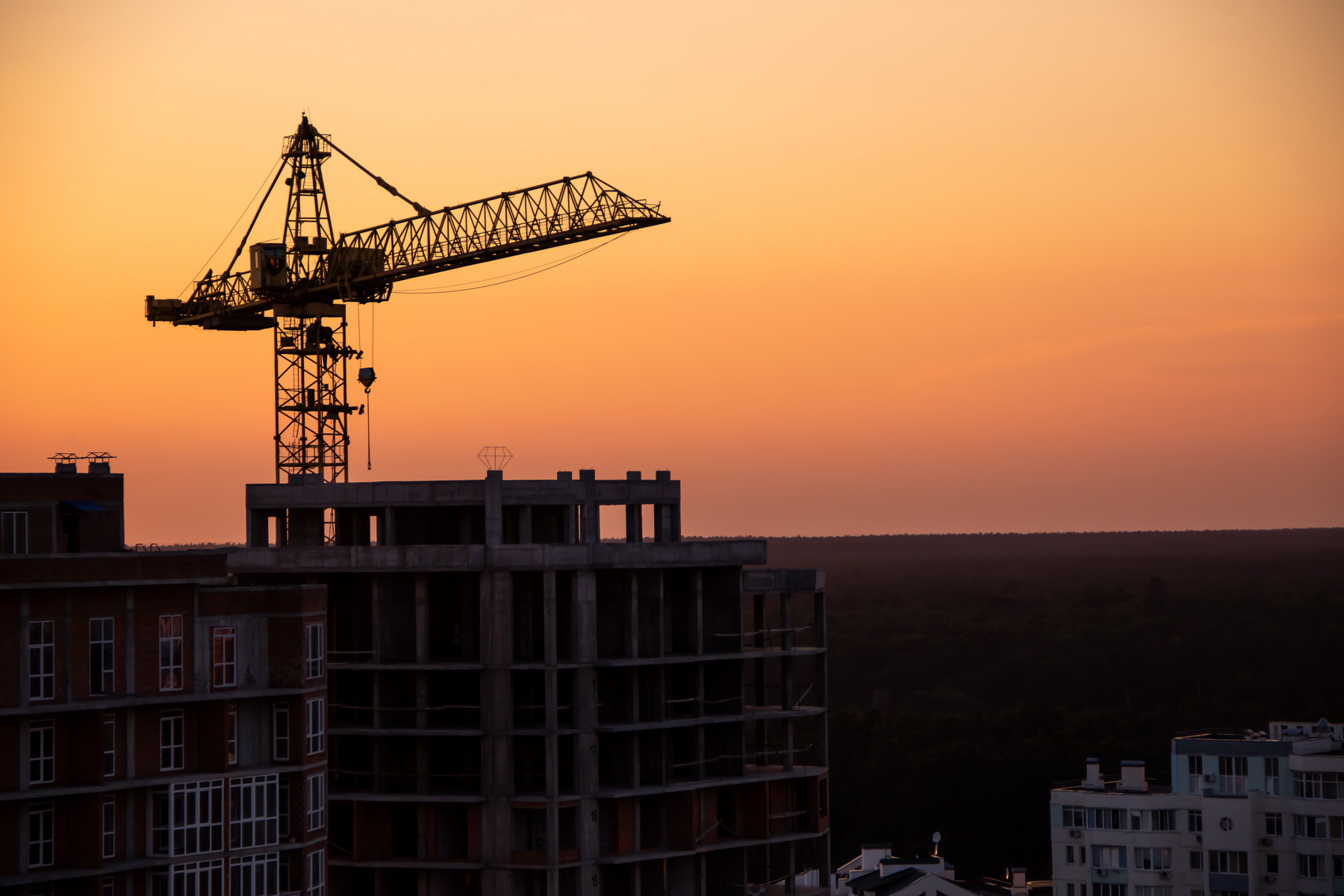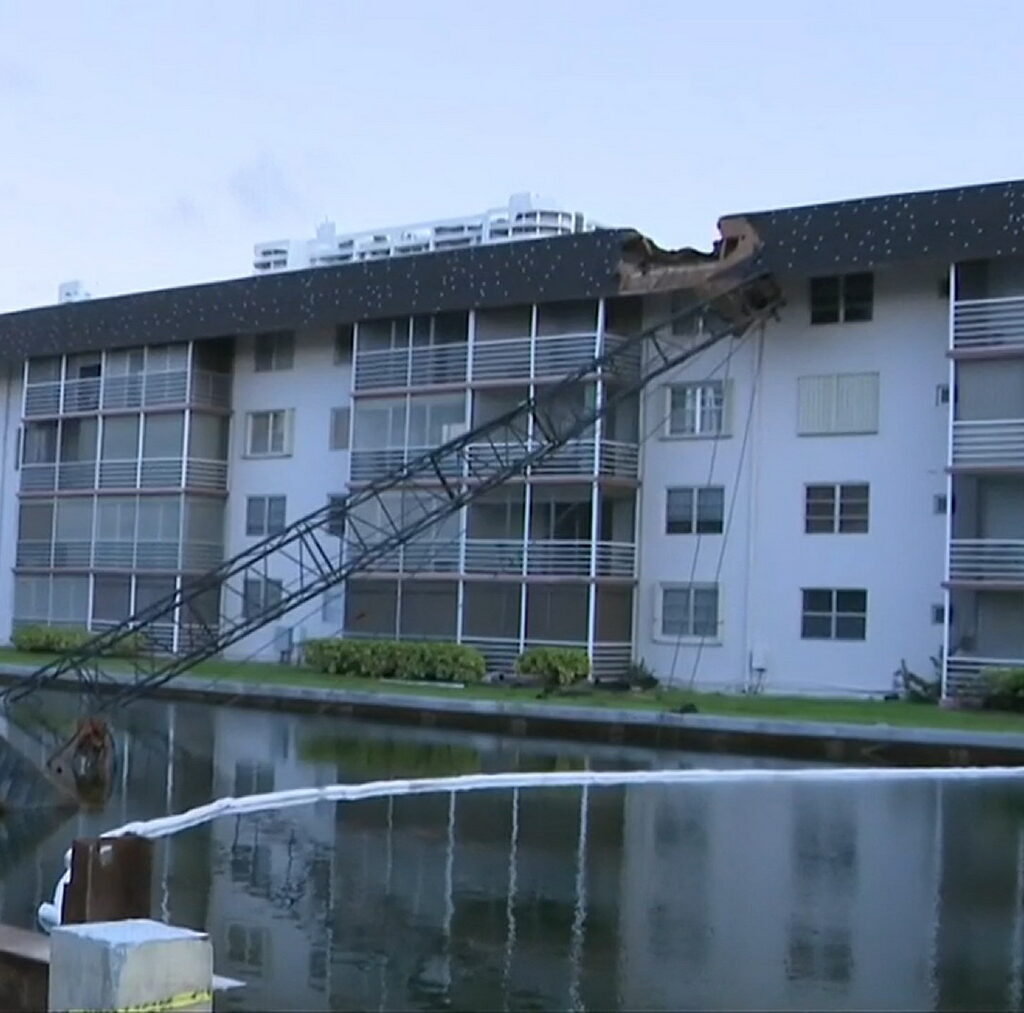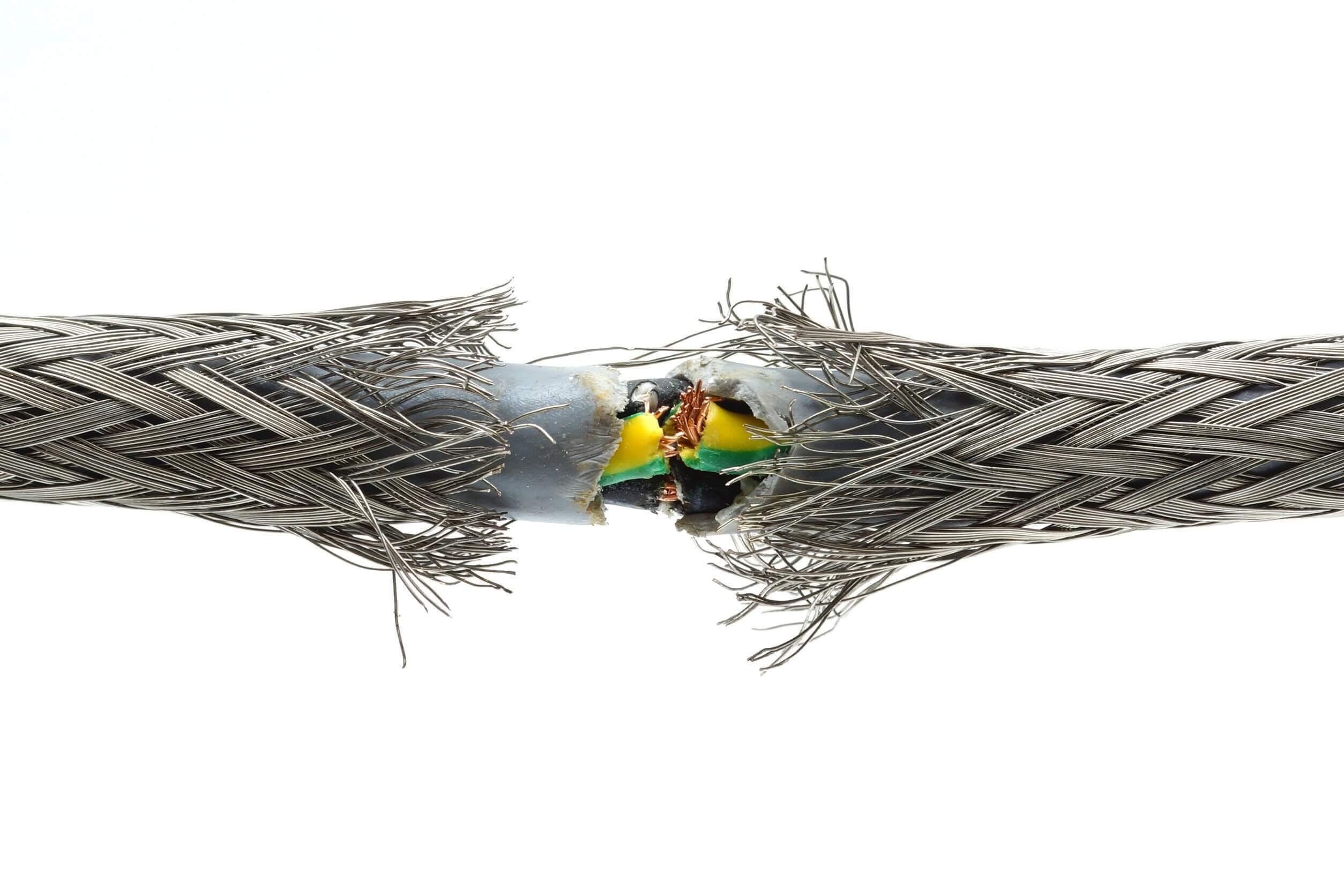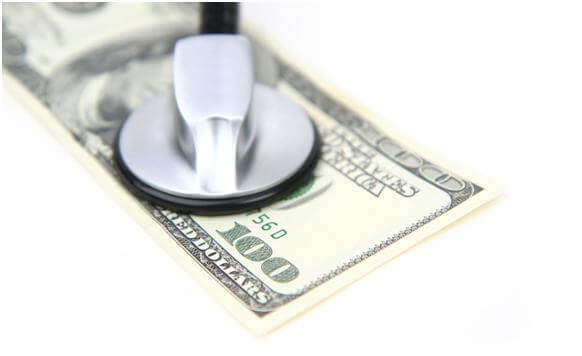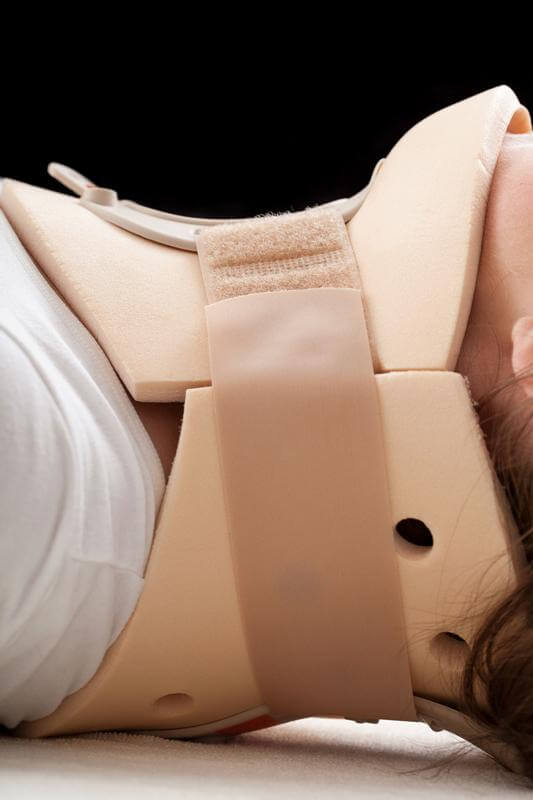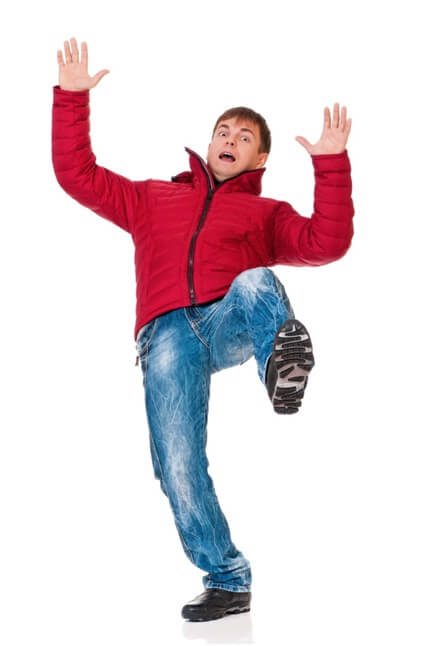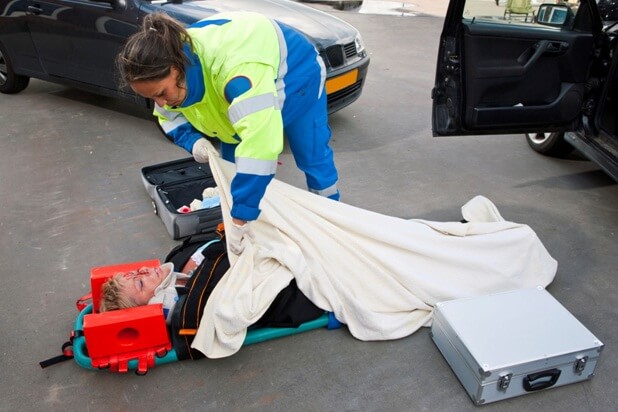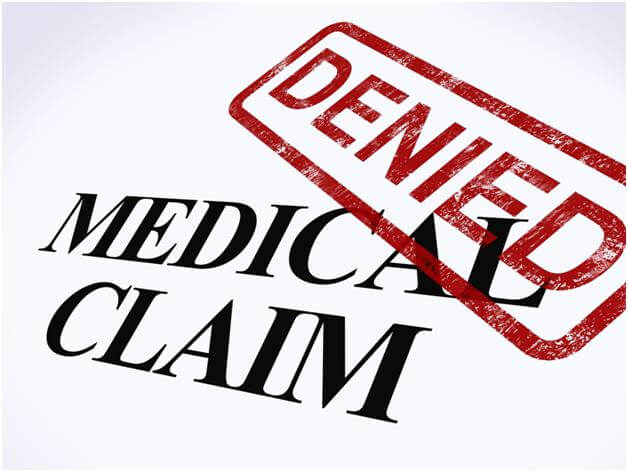COVID-19 Auto Accidents in South Florida
COVID-19 has created a dramatic shift in all of our lives and even on our South Florida roadways. With residents holed up at home, working remotely and running fewer errands than ever, rush hour traffic has dipped considerably. Shuttered bars and restaurants has meant fewer drunk drivers on the roads and less auto accidents.
Those who must and do go out may be under the impression that the roads are safer due to this dip in traffic congestion we’ve seen throughout the state. They have evidence to support that belief too.
Florida drivers were involved in 9,469 crashes in June compared to 31,128 in 2019.
However true, that belief for many drivers contributes to the most serious and fatal auto accidents that can happen.
The Need For Speed
A recent report by the Governors Highway Safety Association (GHSA) stated that many drivers across the U.S. are pushing the needle to speeds greater than 100 mph. FHP have also reported drivers are traveling at speeds of 20-40 mph over the posted speed limit on average.
“Law enforcement officials have the same mission as health care providers — to save lives. If you must drive, buckle up, follow the posted speed limit and look out for pedestrians and bicyclists. Emergency rooms in many areas of the country are at capacity, and the last thing they need is additional strain from traffic crash victims,” said GHSA Executive Director Jonathan Adkins.
Caution Your Confidence
The roads may appear empty and safe for you to push the pedal a little further. Just a few MPH over the speed limit is no big deal, right?
Out of the 9,469 crashes in June, 54% were speed related and 37% of those were fatal.
Due to distracted driving, unsafe road conditions and a myriad of circumstances we’ve seen can happen here at The South Florida Injury Law Firm, we know the roads are never as safe as they may seem.
It’s difficult to foresee auto accidents, the injuries that can come from them and the lifelong effects they have. It can put even a bigger dent in finances that COVID-19 have already burdened so many with. It is even worse when you know somebody else through their negligence caused you suffering, and that’s why you need to fight hard to get compensated for your loss. Be cautious and remember these steps we’ve put together for you to be better prepared:
What to do at the scene of an auto accident during this time of COVID-19
- Get medical attention for those who are injured.
- Still Practice Safe Distance. Stay 6 feet away from the other driver.
- If you are able to without discomfort, pay mind to and keep your mask on.
- Get the name and the driver’s license of the driver of the car that caused the collision.
- If the driver leaves, get the license plate number of the car. If this is not possible, at least get a description of the car including the make, model, color, and any descriptive information you can.
- Call the police. If the car leaves, do not endanger yourself by following or chasing it. The police will do their best to track down the culprit.
- Wait in a safe place for the arrival of the police.
- If there are witnesses, try to get their names, contact information, and statements.
- Take photos of the scene of the accident as well as of the damage to your car.
As soon as possible with auto accidents, make your own written statement about what happened. Include as many details as you can about how the accident occurred. Note exactly where the accident occurred, whether there were traffic lights or a stop sign, what you observed the other driver doing, and any other information that seems relevant.
If someone sustains a head wound, broken arm or puncture wound, the injuries are obviously serious, and medical assistance should be sought immediately. But many times, accidents result in aching or overall soreness. It can be tempting to shrug this soreness off, as the pain may even subside over the following days. Not seeking medical attention can be a major mistake.
Get an Attorney
When searching for the best personal injury lawyers in South Florida, or if you have experienced an auto accident or injury, be sure to check for experience, track record, and reviews from their past clients.
Our team have 100+ years of combined legal experience, so we’ve handled just about every kind of injury and accident case you can imagine. We also come from diverse legal backgrounds that help us when preparing for cases, counting a former public defender and a lawyer who worked for insurance companies and knows their tactics among our partners.
During this time, we urge you to be safe on the road and if you have been in an accident, know that you deserve to be compensated for your pain and suffering – and those responsible deserve to be held accountable for their actions. That was The South Florida Injury Law Firm’s goal when it was founded in South Florida in 1991, and it has remained the centerpiece of the firm’s mission ever since that time.
Crane Accidents and Construction Injuries
Imagine sleeping soundly in bed and then a loud crashing crane comes through your roof.
It was a scene that happened this week in North Miami Beach, where a crane that was being used to repair a seawall slid off a barge and struck the roof of a condominium building.
“I was very lucky because that crane was in front of my apartment two days ago.” said by C. Spetsiotas, a resident of the condo.
Eight units of the building are now off-limits while structural engineers assess the safety of the building. The U.S. Coast Guard is also investigating, along with OSHA
Crane accidents have happened in the past, with unfortunately worse outcomes. In Hallandale Beach, a 27 year old was killed when a crane toppled over. One man died and two others were left injured in Hollywood when the scaffolding collapsed.
Causes of Construction Accidents
Florida construction sites are littered with hazards at every turn. To execute dangerous tasks that these projects require, heavy construction equipment and tools are used, many of which are performed at great heights and under extremely hazardous conditions.
Although federal and state laws that require employers to maintain a safe workplace, some do not. There are instances where contractors take shortcuts to turnaround projects faster and reduce expenses, posing a risk to people who work on the sites and the local pedestrians.
Some common causes of construction accidents include:
- Cranes, ladders and fixtures falling from buildings and walls
- Toxic substance exposure
- Defective construction and tool equipment
- Improper use of equipment
- Improper or insufficient training
- Misuse of tools and other equipment
- Poor safety precautions and oversight
Construction Site Safety and Your Rights
Safety measures on construction sites are supposed to be followed by the Occupational Safety and Health Administration (OSHA) standards. There are clear standards for cranes, crane operations, crane training, fall protection, scaffolding, ladders, hazard communication, machinery, and many other aspects of a construction site project and operations. A party’s failure to abide by OSHA standards may be evidence of negligence if that failure caused an accident.
If you or someone you know have suffered any construction related injuries, or others that are not listed, compensation may be awarded and should contact our experienced Florida construction accident lawyers at South Florida Injury Law Firm today to discuss your legal options with our Free Case Review
Also, you may be entitled to recover more money than a workers’ compensation claim alone could provide. You may also have claims for medical bills, pain and suffering, permanent limitations and past and future lost earnings.
Because of the numerous contractors, subcontractors and other parties often involved in construction sites, it can be difficult to determine exactly who should be held responsible for your injuries or the death of a loved one.
Types of Available Compensation
Workers’ Compensation
Almost every employer is required to carry workers’ compensation insurance. These benefits can help an injured worker cover medical expenses and lost wages and are available to a worker regardless of the circumstances surrounding an accident that causes injury.
Personal Injury
Although a worker cannot file an injury lawsuit against their employer, it may be possible to file a claim against a third party whose negligent actions led to your injury. A personal injury claim is also available to non-workers who are injured on a construction site.
Product Liability
If a defective product caused your injuries, it may be possible to bring a claim against the manufacturer, retailer or wholesaler of that product.
Wrongful Death
If you have lost a loved one in a construction accident, you may be entitled to file a wrongful death lawsuit seeking compensation for your loss.
Construction Related Accident and Injury Help
With decades of experience handling these types of complex cases, our South Florida Injury Law Firm construction accident lawyers have the skills and the resources needed to conduct a thorough investigation. You can rely on us to put your interests first and will work to help you recover the maximum compensation you are entitled.
Schedule a free consultation by calling (954) 488-JEFF (Fort Lauderdale), (954) 488-JEFF (Boca Raton & West Palm Beach), or 877-566-8759 (toll-free). You can also fill out this online form to set up your case evaluation. We’re a dedicated team of personal injury lawyers who work on a contingency basis and will take your calls at any time, on any day of the week.
Burned by Keurig? You’re Not the Only One
As many of us have learned from stepping on a child’s seemingly innocent Lego—sometimes, it’s life’s most wonderful pleasures that bring the most agonizing pain.
Sadly, hundreds of individuals were brought to this conclusion yet again after being burned by their Keurig machines while waiting for their coffee to brew. As NBC recently reported, Keurig is currently recalling almost 7 million coffee makers that were produced between 2009 and 2014. The company stated that it had received about 200 reports from users stating that scalding hot water inexplicably sprayed from their machines. Ninety of these incidents resulted in burn-related injuries.
Product Defects
This is a huge recall for Keurig, the coffee brewing company that has become a household name for many Americans. But large-scale recalls like this are far from unheard of, even for major corporations.
In 1982, Tylenol recalled approximately 31 million bottles after 13 people died after taking the iconic pills (an event that eerily predicts our current problem with prescription drug defects). In 2007, 1 million Easy Bake Ovens were recalled after Hasbro received several complaints about young children being burned on the toy. And just last year, car manufacturer GM recalled approximately 26 million cars with faulty ignition switches that had led to 31 auto accidents.
Is any company—or product—safe from recalls? Unfortunately, probably not. There are simply too many things that can go wrong in the assembly process that can result in products being defective in any number of ways.
Product recalls are generally a result of one of three types of defects:
- Design flaws. Design flaws are generally those that permeate all products in a certain line, because the problem is inherent in the very blueprint of the product. Design flaws are present in products even if they were manufactured perfectly.
- Manufacturing flaws. Manufacturing flaws are those that occur as a result of a manufacturing error – a mistake made during the physical process of building the product. These defects are usually only present in one type of product—that is, one particular product that had to undergo a specialized manufacturing process—and do not apply to an entire product line.
- Failure to provide adequate warning. This is the most easily avoidable type of defect. So-called “failure to warn” defects are those that fail to provide adequate notice about the proper way to use a certain product. These defects are particularly dangerous on products that can be seriously damaging to the user if used improperly, such as power tools or large appliances.
Because any of the above product defects can result in harm to you or your family, and because manufacturers have a duty to create products that won’t cause harm when being used properly, it is vital that you hold them responsible.
What Can You Do?
Unfortunately, product defects can sometimes result in serious personal injury. From minor bruises as a result of an improperly assembled chair to severe physical injuries and even death that can occur due to an improperly manufactured brake pedal.
Even if you find yourself going up against a large corporation, don’t be afraid to stand firm and defend yourself. Companies have a responsibility to consumers to keep them safe, and if any company fails to do so, you need to fight back both to keep something like this from happening to another person and to get the compensation you need to adequately cover your pain, suffering, and expenses. Contact the law offices of The South Florida Injury Law Firm today and get the justice you deserve.
About the Author:
Jeffrey Braxton is a trial lawyer in Fort Lauderdale who has devoted his 22-year career to the practice of personal injury law. As lead trial attorney for The South Florida Injury Law Firm, Jeff has litigated thousands of cases and is a member of the Million Dollar Advocates Forum, an exclusive group of attorneys who have resolved cases in excess of one million dollars.
Should There Be a Cap on Slip and Fall Awards?
Each year, thousands of people are injured in slip and fall accidents. Sometimes, injuries sustained from these accidents can be severe, particularly in instances where an individual has preexisting medical problems, say in his or her hip. In certain slip and fall cases, the damages sustained can be staggering.
Because slip and fall cases can result in such serious injuries, lawsuit payouts following these cases can rack up some high sums. It’s not uncommon to see slip and fallawardsreach six figures, or even rise to the millions.
In one case, Marriott International was ordered to award $1.2 million for injuries sustained by one of its hotel guests. In this case, the court had to consider not only the case of the guest’s shattered ankle and the two surgeries that followed the fall, but also the arthritis that had developed in the ankle, the fact that the woman now walks with a limp, and countless other problems that tie in with emotional and physical suffering. Marriott International plans to appeal the $1.2 million verdict.
When payout amounts get so high, it’s common for major companies to argue and try to appeal these verdicts. During those appeal cases, the question inevitably arises: Should there be a cap on slip and fall awards?
What Would a Slip and Fall Cap Mean?
To individuals who sustain injuries following a fall, high slip and fall payouts seem fair. For defendants, though, high payouts are rarely as appealing, especially when the award numbers climb into the multiple thousands or millions.
When award prices get this high, one of the first arguments that people jump to is that there should be a cap on these types of awards. In injury cases, this debate has been going on for years. Usually the cap people advocate for relates to the amount that can be paid towards “non-economic” damages (that is, damages that are difficult to put a price tag on, such as emotional trauma). In almost all cases, a cap would not apply to “economic damages” (namely, those that include set amounts, such as hospital bills).
In many states, non-economic caps are already in place. Usually, the cap is set somewhere around $250,000 to $500,000. This means that, regardless of the details of your claim and your level of suffering, you will never be awarded more than the set amount.
The Business Perspective
Aside from the obvious benefits that award caps would have for defendants in slip and fall cases, it has also been argued that limiting damage payouts can reduce liability insurance losses in the long term. Some say that capping non-economic damages means that insurance companies will not have to fork over large sums, which means they won’t be trying to recuperate the losses from citizens by increasing premiums.
It has also been argued that capping damage payouts would lessen medical expenses across the board. Advocates claim that damage caps would allow doctors to be less fearful of being sued, meaning that they would no longer need to practice so much “defensive” medicine. (“Defensive” medicine refers to the practices of ordering an excessive number of tests and procedures to effectively cover all possibilities and lessen the likelihood of a lawsuit.) If defensive medical practices decrease, the cost of health care would go down,as well.
Damage Caps: Who Do They Benefit?
Contrary to the findings noted above, information from a 2006 report from the Confessional Budget Office showed that,“Lower premiums alone would not cut overall health care costs.” According to this report, malpractice costsare, in fact,marginal when considered in light of the wider realm of health care spending, which means that lowering them would have very little impact on overall health care costs.
In the above article, Chris Mather, the Communications Director for the Association of Trial Lawyers of America, states, “There’s nothing to back up the correlation between the high cost of premiums the doctors pay for medical malpractice insurance and lawsuits. This is about the insurance company wanting to pay the least amount possible for injury. … The civil justice system, the courtroom, is [the victims’] last resort. It’s the last place they can go to get what they need.”
Since damage caps likely will have no significant effect on health care costs, it is very unlikely that you or anyone who files a slip and fall claim would see any benefit from these caps.On the contrary, damage caps would only work against you.
The Victims’ Perspective
First, caps could discourage slip and fall victims from filing lawsuits. Lawsuits can be exhausting and expensive, so if the possible award amount is not substantial enough, individuals with legitimate cases may choose not to go all the way.This is unfair, as all injury victims should be entitled to plead their case.
Furthermore, if an injured individual decides not to file a suit, the responsible parties will be let off the hook.Not be held accountable for their actions means they may continue to endanger others’ lives through their recklessness or negligence.
Lastly and most importantly, if you’re the party injured in a slip and fall accident, you might not get what is due to you.Every slip and fall case is different, and the legitimacy of your claim should not depend on a cap that was set in place by people who have no knowledge of you or your claim. Caps like these would essentially concede that your injuries and your accompanying emotional and physical suffering are worth no more than whatever pre-determined amount has been settled on as a cap.
You deserve more.
Victims of slip and fall cases are entitled to financial reparations for their pain and suffering . Calls for caps are essentially calls to sweep these claims under the rug, claiming that victims’ injuries are invalid or not worth adequate compensation. But you deserve to be treated with fairness and respect. If your injuries exceed the cap’s value, you should receive the total payment that you are justly entitled to.
“Help! I’ve Fallen and It’s All Your Fault!”
We’ve all heard a story like this one before: a man walks into a department store with a banana peel, surreptitiously tosses it on the floor, then gets down on the ground and pretends to have seriously injured himself by slipping on it.
Of course, slipping on banana peels is mostly just a myth, but that’s beside the point. When most people think of injury lawsuits where someone hurts themselves at a business and tries to sue them for it, a version of this is what they imagine – scam artists out to earn a big payday by faking a problem and blaming someone else.
Why is this the image that we picture? Two reasons:
1) Because the media loves stories that catch people in the act of doing something wrong. It’s a lot more entertaining watching a security video of someone pretending to slip and fall than it is learning that the teenager cleaning up at the local Walmart forgot to put up a wet floor sign.
2) Because faking falls in order to get money from a lawsuit is a real problem that costs our country a lot of money.
How Big of a Problem Is Insurance Fraud for Falls?
By some estimates, fraudulent slip and fall claims cost around $2 billion each year in our country when litigation costs are factored in. But that’s just the beginning. According to the National Insurance Crime Bureau, slip and fall claims that they deemed “questionable” increased by 12% from 2010 to 2011. This news report from KXJB in North Dakota makes the problem sound even worse, saying that “suspicious” claims have gone up an astounding 57% since 2008!
The worst part, though, might be the belief that many faked incidents never even turn into claims since the scam artist in question goes directly to the business owner and cuts a deal for cash. Why would businesses agree to such an arrangement? Because they are afraid of the costs and bad publicity involved if the situation ends up going to court. And even if it is simply handled through their insurance, they believe it may end up costing them more by raising their premiums.
The Case of Florida and Slip and Fall Reform
About a decade ago, the Florida Supreme Court presented a ruling on a personal injury liability case that essentially said businesses were responsible for hazards on their property even if they weren’t aware that those hazards existed. This led to a sharp increase in claims, as well as giving the state a reputation as an easy place to win money for slip and falls.
Naturally, businesses weren’t happy because this put the entire burden on them, and in 2010, the legislature created a new law. It required claimants to show that businesses either knew about the specific problem that caused their accident or that it was a hazard that occurred frequently enough that the company should have known and done something about it.
This was deemed a good compromise because it lessened the chance that a scammer could just come into a business and create the circumstances of their own accident, but it also left protections in for those who truly had suffered an injury that could have been prevented by the property owner. All they needed to do was provide evidence that the hazard that caused their injury was something that should have been dealt with.
Did it work? Well, that depends on who you talk to. Again looking at numbers from the NICB, Florida was second only to California from 2010 to 2011 in what they determined were “questionable” claims, beating out more populous states like Texas and New York. Even after reform, a lot of people were apparently still trying to scam their way to a big payout – at least according to statistics from the NICB. But statistics are a funny thing, and often there are two ways to look at them.
Are Slip and Fall Fakers Really That Big of a Problem?
The answer is an unfortunately complicated yes and no.
Yes, because it’s impossible to deny that something costing $2 billion each year is minor. Moreover, the bad publicity generated from these kinds of cases makes it that much tougher for people who legitimately suffer falls and deserve to be compensated for their pain and suffering.
Case-in-point: recently, a woman was awarded $10,000 after her apartment failed to clean away ice and snow, and she fell and seriously injured herself. Now that kind of money is nothing to sneeze at, but there’s a problem: the judge assessed the case before the trial and estimated that she should receive $65,000 to cover the cost of medical bills, litigation, and so on. The $10,000 she won doesn’t even cover the cost of going to trial!
But fakers are also, arguably, not that big of a problem when you look at the big picture from another angle. How so? According to the National Floor Safety Institute, only 3% of slip and fall claims are fraudulent. Some basic math tells us that means 97% of claims are real and valid and deserve compensation.
You’d never imagine that from all of the negative publicity, though. And you would also probably think that $2 billion dollars represents a huge portion of overall insurance fraud, when in fact it’s only about 5% of the $40 billion lost each year. The problem seems bigger than it is because we’re constantly being bombarded with stories about it.
What Needs to Be Done for Future Fall Cases
The trick in engaging in this type of reform is that you need to be careful to strike a balance. The Florida legislature was on the right track, but more probably need to be done. Businesses can’t be afraid that they’re going to be sued from the second they open their doors, but people who suffer from real injuries also can’t be so afraid to seek compensation that they simply back down. Depending on the severity of a fall, you can sustain damage that can haunt you for your entire life.
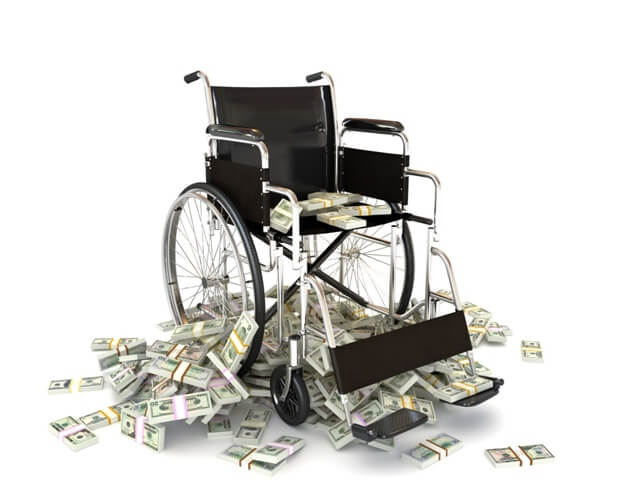
If we really want to limit fraud, perhaps more of the burden should be placed on lawyers to thoroughly examine the stories of their potential clients and look hard at the evidence before taking on these kinds of cases. Most well-respected litigators already do this, because they don’t want to gain a bad reputation. However, more can be done to standardize the process and hold people accountable. This will cut down on lost revenue for businesses, increase the likelihood that personal injury lawyers will win the cases they take, and free up valuable time in our court system.
New PIP Rules Limit Help Injury Victims Can Get
A few months ago in Florida, accident victims and their advocates were dealt a depressing blow when a group of businesspeople fighting the state’s new PIP laws lost in court. What kind of blow? Not only do those who suffer injuries in car crashes now have fewer options regarding where and how they get medical help, they’ll have less money to do so and be subject to strict rules about providing proof and acting within thenarrow time limits.
In order to understand the changes and why they’re bad for regular Floridians, first you have to know what PIP is, what it’s supposed to do, and what it actually does.
PIP Stands for Personal Injury Protection
Florida is one of only 12 states that require PIP insurance for drivers, and there are plenty of good reasons why the law isn’t more widespread. What is personal injury protection insurance? While it sounds like something that would be great for drivers (you won’t have to worry if you get hurt in an accident!), in reality the law is a sort of Band-Aid for states that have decided to make accidents “no-fault.” Basically, no-fault means what it sounds like – if you are in an accident with another driver, neither one of you will be held responsible for the crash, even if the blame clearly lies with one party.
The unfortunate side-effect of having a no-fault law is that when people are injured in a motor vehicle accident, they can’t expect to receive compensation from the other driver’s insurance unless they’re willing to take them to court. But because it can take months – or even longer – to go through the process of suing someone, that left victims footing the bill for their injuries or getting worse if they couldn’t afford treatment.
Florida’s PIP law, originally written in the ‘70s, requires motorists to purchases medical insurance as part of their car insurance plan. This allowed them to seek help immediately, but also led to all kinds of fraud. Lawmakers have been trying to fix the problem for decades, but instead of simply getting rid of PIP, they keep altering the law.
Over time, it’s evolved into something that’s less about making sure victims get the help they need and more about protecting insurance companies.
Latest PIP Rules Hurt Everyone Except Insurers
The most recent changes to PIP were supposed to go into effect in January of 2013, but a group of businesspeople filed a lawsuit to prevent them from becoming law. Unfortunately, they lost their suit this past October, and we’ve had to live with the repercussions ever since. Just a few of the changes that hurt regular Floridians include:
- Less money for your injuries – Under the old rules everyone had up to $10,000 for medical problems, but now that’s limited to only the most serious injuries; most people will only be allowed up to $2,500.
- Fewer options for care – Hurt your back or neck in an accident and want to see a massage therapist? Hope you’re willing to pay out of your own pocket, because PIP no longer covers those services or those of acupuncturists.
- Less time, but more requirements – If you don’t seek medical help within 14 days of your accident but later notice a problem, the insurance company doesn’t have to pay anything. However, you can’t file an injury claim until you’ve gotten a statement from a doctor “proving” you need help.
The only good news from all of this is that the judgment against the acupuncturists and massage therapists practically begs an accident victim to file a similar lawsuit, because the court verdict seemed to imply that they would be on better legal grounds to fight the law. But until some enterprising lawyer finds a client willing to make this argument, injury victims are going to have to rely on compensation from injury lawsuits more than ever.
About the Author:
Jeffrey Braxton is a trial lawyer in Fort Lauderdale who has devoted his 22-year career to the practice of personal injury law. As lead trial attorney for The South Florida Injury Law Firm, Jeff has litigated thousands of cases and is a member of the Million Dollar Advocates Forum, an exclusive group of attorneys who have resolved cases in excess of one million dollars.


